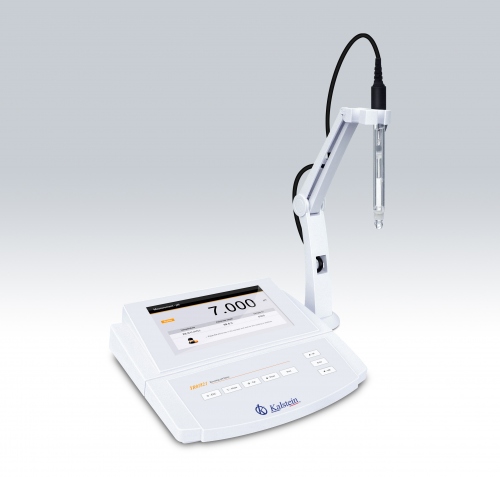A pH meter or pH meter is a laboratory instrument used to measure the acidity or alkalinity of a solution, perform a fairly accurate analysis on these fluids, this is done through polarizable glass plates sensitive to hydrogen ions.
This equipment measures the difference in electrical potential between a pH electrode and a reference electrode. The information provided by this laboratory device expresses the degree of acidity in solution of an acid or base in terms of the activity of hydrogen ions. And it’s used in many applications that can range from lab experimentation to quality control analysis.
Structure of a pHmeter
A pH meter is commonly composed of an electronic amplifier and two electrodes, a pH measuring electrode, a reference electrode or alternatively a combined electrode and some type of screen calibrated in pH units. The reference electrode has a known, constant and stable potential. In the pHmeter design we find rod-like structures, commonly made of glass.
The pH-measuring electrode has a glass bulb specifically designed to be selective to the hydrogen ion concentration, with an output in millivolts varying according to alterations in the relative concentration of hydrogen ions inside and outside the bulb. The output of the reference electrode does not change with the activity of hydrogen ions.
pHmeter Operation
The operation of a pHmeter based on the design of the electrodes, these are rod-shaped structures, the measuring electrode as mentioned above possesses a glass bulb, which in sensitive to the presence of hydrogen ions. When the electrode is immersed in the solution to be analyzed, the hydrogen ions in the solution change for other positively charged ions in the glass bulb generating an electrochemical potential through the bulb. This is when the electronic amplifier detects the difference of electrical potential between the two electrodes generated in the measurement and converts the difference of potential into pH units.
A pH meter acts as a high impedance amplifier that accurately measures the electrode’s minimum voltages and delivers the results directly in pH units on an analog or digital display. In some cases, the stresses can also be interpreted for special applications or use with selective ion electrodes or oxidation/reduction potential.
How should a pHmeter be used?
A pHmeter is a simple to use equipment, but it is necessary to follow a series of simple steps to be able to use it with great precision in order to obtain reliable measurements, among these steps we can highlight:
- Turn on the computer.
- Wait a period of time to start using it. Approximately 30 minutes.
- Press the calibrate button.
- Immerse in a pH 4 solution.
- Then dip in distilled water.
- Then proceed to measure the sample.
This procedure is carried out when the equipment is not calibrated, likewise it is advisable to take into account the instructions of use of the same since depending on the pHmeter model can vary the procedure, since there are pHmeters that require special calibration.
What do we offer you in Kalstein?
Kalstein is a company MANUFACTURER of laboratory equipment of the highest quality and the best technology at the best prices in the market, so you can make your purchase confidently with us, knowing that you have the service and advice of a company specialized in the field and committed to innovation. This time we present you our table pH meter YR01824, which has the following characteristics, making it an essential equipment in your laboratory:
- pH electrode, pH buffer bags (4.01, 7, 10.01), power adapters.
- Automatic recognition 2-point calibration for US buffers U.S. AND NIST
- The automatic diagnosis of the electrode shows the slope of the pH
- Manual temperature compensation ensures accurate readings across the range.
- Applications: In education during chemical experiments, and in the Laboratory for routine measurements and quality controls.
For more information on our products, please check out HERE

